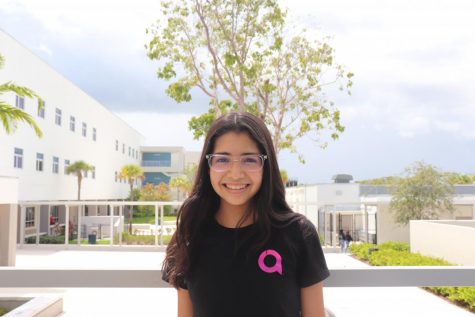The Joy of Coffee: The Inside Scoop Into Palmetto’s Coffee Culture
January 14, 2022
Since coffee’s invention in the 15th century, it has become an American staple. Chains of stores such as Starbucks, Dunkin Donuts and Tim Hortons reign supreme as Americans consume about 400 million cups of coffee every day. At Miami Palmetto Senior High School, teachers and students are no different as they gleefully partake in coffee culture.
“I would say that a cup of coffee is magical and can laser-focus me, and I am highly productive. Give me a cup of coffee and an hour and I am superhuman,” Palmetto AP World History teacher, Julianne Farkas said.
Another coffee-lover is Palmetto senior Josie Blohm, founder and Chief Executive Officer of Composting with Coffee. Blohm starts off each day with a trip to Starbucks to get her daily caffeine fix.
“Sitting in my room is a giant Starbucks sign pulled off the wall of one of the Starbucks here in South Florida. That just goes to show how much I love Starbucks,” Blohm said.
She is so passionate about coffee that she painted her senior parking spot with her daily Starbucks order: a venti cold brew with seven pumps of classic syrup. Her order has been the same for the past seven years from when she began drinking coffee in the seventh grade.
Blohm is not the only student who started drinking coffee young. Fellow Palmetto senior Julian Orrego also began drinking coffee in his youth.
“I would say I started drinking coffee at a very young age because I was raised in a Colombian household, so I would have cafe con leche and I’ve always really enjoyed it, but in high school that’s when I started relying on it more,” Orrego said.
With coffee being an integral part of Hispanic culture, many students agree that their heritage has contributed to their consumption of coffee. In many Hispanic cultures, it is customary to sip on coffee and chat after a meal. With this behavior modeled to them, many Hispanic children start drinking coffee early on.
“Last year for AP Research, I did my entire research project on looking to see if marketing strategies employed by Starbucks contributed to teen caffeine dependence here in Miami and based on what I found, a lot of teens here in Miami are dependent on caffeine and/or have a mild to strong caffeine dependence, and I also thought that was because of our strong Hispanic influence here,” Blohm said.
Despite stereotypes of high-achieving coffee-addicted high schoolers, these Panthers are in control of their coffee consumption.
“I would say that I don’t necessarily need coffee. There was definitely a point in time that I did but now if I don’t have coffee I mean I’ll be a little bit less alert but it’s nothing terrible like I can go without coffee,” Orrego said.“Too much coffee is definitely anything above 200mg of coffee. I actually know that off the top of my head because I research to make sure I’m not having too much. I would say that corresponds to about 3 to 4 cups of coffee. So if you’re having anything more than that, that is too much.”
Farkas is known for her love of coffee. Although she may have had a dependence in the past, she has taken the reins on how much caffeine she consumes on a daily basis.
“The AeroPress also prevented me from drinking a lot of coffee because it became a little more of a ritual,” said Farkas, “Believe it or not, I really only drink two, maybe three [cups a day].”
Joel Soldinger, Palmetto’s AP Macroeconomics teacher is an AeroPress enthusiast as well and his students can attest to his love of coffee. Soldinger holds a raffle at the end of every quarter in which the prize is a fresh cup of his luxury coffee.
“Something that I discovered is called the AeroPress. I just found it to be very easy, very forgiving, and you don’t get some of the bad bitterness, or negative aspects of coffee. It’s very easy to clean up, and it just makes a great cup of coffee. There’s world championships for the AeroPress and it’s kind of become a little cult brewing method,” Soldinger said.
He contributes his coffee grounds to Blohm’s service project, Composting with Coffee, which was founded in order to make use of coffee grounds after they have served their primary purpose.
“Over winter break, I was making coffee and dumping my coffee grounds into a little container on my counter that goes into our compost. I garden a lot at my house and I compost a lot at my house because we have so much food that we don’t like to waste and I asked my mom if she thought doing something with compost was feasible,” Blohm said.
Since its inception in January 2021, the project has collected coffee grounds which are then composted and used in Palmetto Elementary’s garden. Blohm teaches the Green Team students about the importance of eco-awareness through hands-on learning every week.
“Last year I helped rehab their composting game because they were using their compost bins more as garden trash bins which wasn’t really good,” Blohm said. “The state of their compost is viable now which is something they haven’t had in a while.”
Coffee has impacted Palmetto in many ways and although America may run on Dunkin, our Panthers run on coffee.










